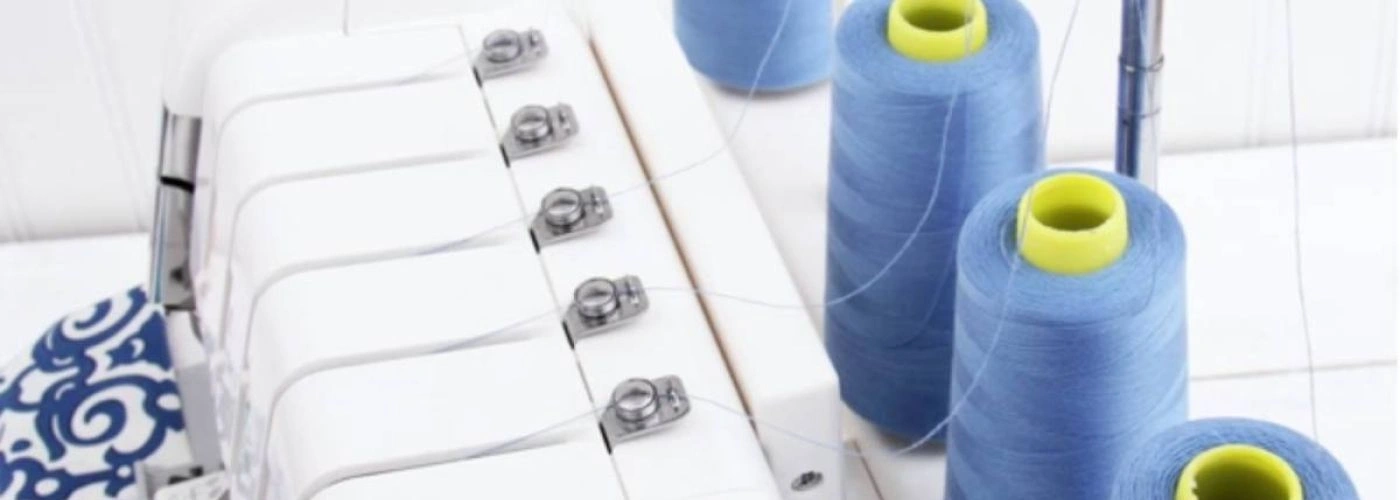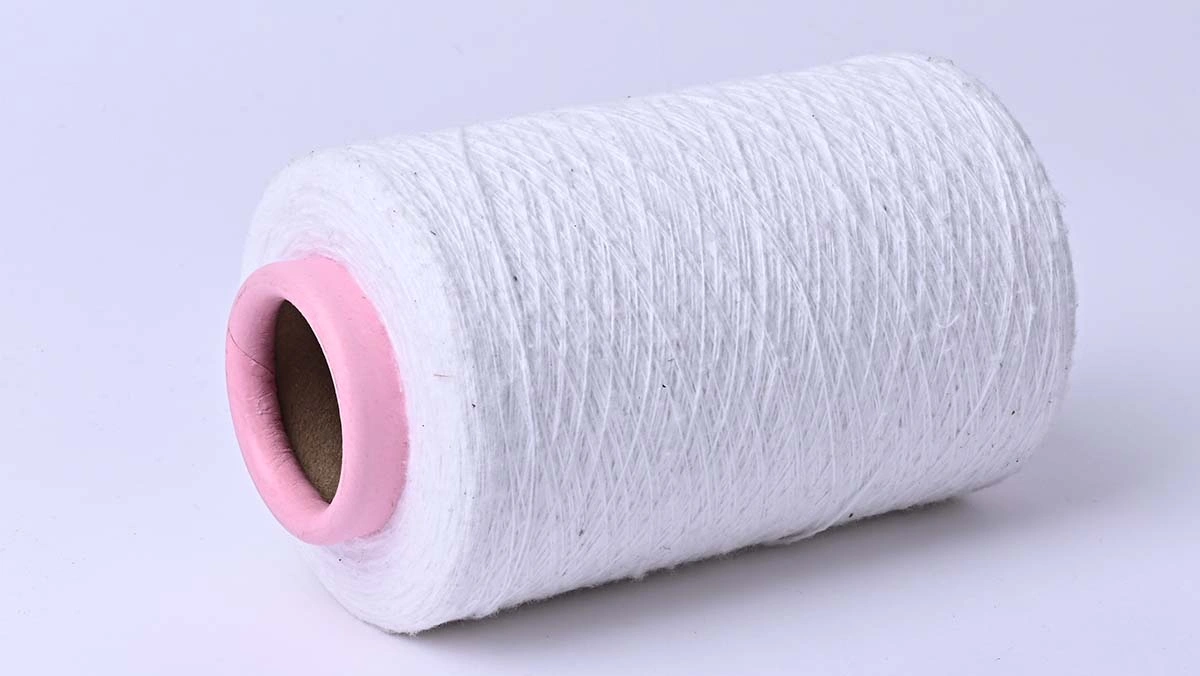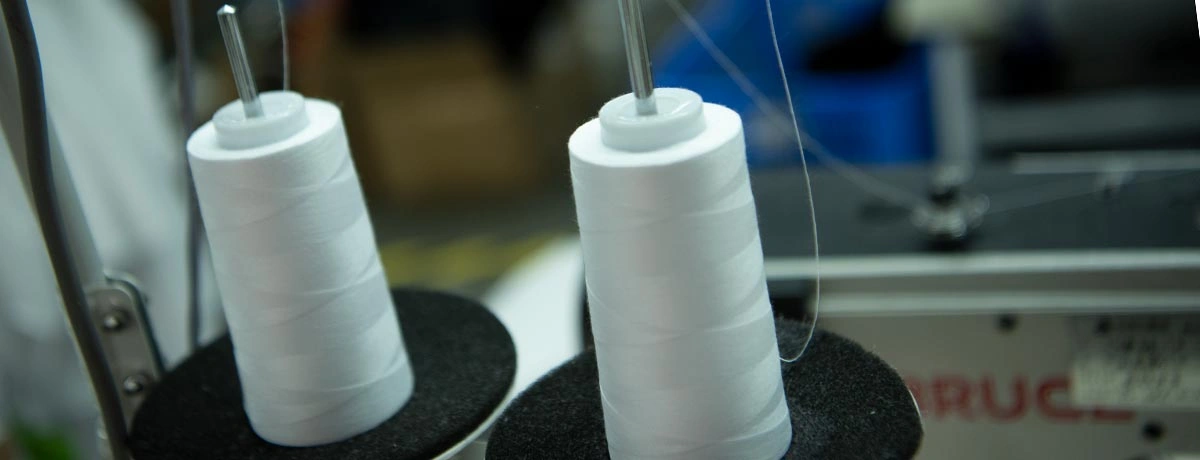
Choosing the Right Spools for Sewing Machines
Why Is Choosing the Right Spool Important for Sewing Machines?
Selecting the correct spool ensures smooth and even thread flow, and using the wrong kind of spool can lead to a problem such as thread breakage or machine issues, including tangling, snagging, or uneven tension.
Different types and kinds of spools—such as stacked and cross-wound—can affect sewing performance in unique ways depending on how they are used. Using an incompatible or poor-quality spool may cause thread breakage, damage to fabric, or even harm to your sewing machine.
What Are the Main Types of Sewing Machine Spools?

Sewing machine spools come in different materials and structures, each with unique features. Thread spools come in various forms to accommodate different types of sewing thread.
The most common types include plastic, metal, and cardboard, along with specialty designs like cross-wound spools.
-
Plastic Spools – Lightweight, rust-resistant, and suitable for most domestic and industrial machines.
-
Metal Spools – Durable and often used in vintage or heavy-duty sewing machines.
-
Cardboard Spools – Eco-friendly and disposable, suitable for small-batch or temporary use.
-
Cross-Wound Spools – A cross wound spool features thread wound in an 'X' pattern, also known as cross wound thread. These spools are designed to feed sewing thread smoothly from one end and are typically mounted horizontally to prevent tangling.
Understanding the pattern and orientation of your thread spool is key to achieving optimal results.
What Are the Pros and Cons of Plastic Spools?

Pros:
-
Affordability: Cost-effective, especially when purchased in bulk.
-
Visibility: Clear plastic spools allow you to see the remaining thread.
-
Lightweight: Easy to handle and store.
For more details on durable bag closing thread options suited for agricultural and industrial use, visit our product page.
Cons:
-
Durability: May warp or crack over time under heat or pressure.
-
Friction: Certain plastics can increase thread friction, affecting tension.
What Are the Advantages and Disadvantages of Cardboard Spools?

Pros:
-
Eco-Friendly: Made from biodegradable and recyclable materials.
-
Cost-Effective for Single Use: Ideal for temporary or sample threads.
Cons:
-
Low Durability: Easily bent or affected by moisture.
-
Not Reusable: Intended for single-use applications.
How Can I Ensure Spool Compatibility with My Sewing Machine?

Always start by checking your sewing machine manual—it specifies the correct spool and bobbin types for your model. Then, consider your spool pin orientation. There are several options for mounting spools, such as using thread stands, multiple-spool holders, or adapters, to accommodate different spool types and ensure smooth operation:
-
Vertical Spool Pins: Best for stacked spools (threads wound in parallel layers). These typically don’t need a spool cap. Make sure to mount the spool correctly so the thread feeds smoothly.
-
Horizontal Spool Pins: Designed for cross-wound spools (threads wound diagonally). A spool cap ensures smooth unwinding and prevents tangling. Mount the spool properly to help the thread feed off the correct end. Placing the spool or thread stand closer to the machine can help prevent tangling and feeding issues.
Using a thread guide can help direct the thread from the spool to the needle, ensuring correct tension and smooth feeding. Providing a rest or support for the spool, such as a stand or foam pad, can also improve performance.
Accessories such as foam pads or a thread stand can also help stabilize the spool and improve thread feeding. You can add a foam pad to the spool pin to improve thread feeding and prevent the spool from coming off.
Why Is the Spool Pin Important?
The spool pin controls how the thread unwinds from the spool, directly impacting thread tension and stitch quality. Gravity helps keep the spool in place on the pin or stand, ensuring stable thread delivery.
-
Horizontal Spool Pins: Work best with cross-wound spools to ensure smooth, tangle-free thread flow. The way you pull the thread from the spool can affect tension and stitch quality.
-
Vertical Spool Pins: Ideal for stacked spools, allowing free spinning and even feeding.
Using the correct spool cap prevents the spool from slipping or snagging, while a thread stand helps when working with larger cones or specialty threads.
Making sure the thread feeds smoothly by using the correct setup for your spool type is essential for optimal sewing results.
Which Brands Offer High-Quality Spools?
Reputable brands are essential for consistent performance.
-
MH is a leading textile manufacturer known for its durable, high-performance thread spools used in both domestic and industrial settings. MH’s precision-made spools ensure smooth thread flow and consistent stitch quality.
-
Madeira is another trusted brand, especially recognized for its rayon embroidery threads.
Both brands offer worldwide shipping and are recognized for their global presence. Their customer service teams are available to answer questions promptly during business hours, Monday to Friday. When purchasing their products, you can pay securely and conveniently using various payment options. Both offer reliability, customer support, and consistent product standards.
What Are Some Tips for Winding and Using Spools?
To ensure optimal sewing results, always have the right spool on hand to ensure smooth operation. Follow these best practices:
-
Maintain Consistent Speed: Avoid winding bobbins too quickly to prevent stretching the thread.
-
Ensure Even Tension: Wound thread should be smooth and uniform.
-
Use the Correct Spool Cap: Prevents thread from catching on spool edges.
-
Inspect for Damage: Discard cracked or warped spools.
-
Allow Free Spinning: Ensure smooth thread release to prevent tangling.
-
Store Properly: Keep spools away from sunlight, dust, and humidity.
-
Choose the Right Thread: Selecting the correct thread will bring out the best in your sewing projects.
By following these tips, you’ll be able to sew efficiently with any spool type.
How Do I Choose the Right Spool Size for My Sewing Machine?
Refer to your machine’s user manual for exact spool and bobbin size specifications.
Using an incorrect size can lead to poor stitch quality and may even damage the machine’s threading system.
What’s the Difference Between a Spool, a Cone, and a Bobbin?
-
Spool: A small cylinder holding thread for domestic machines.
-
Cone: Larger, cone-shaped holder for industrial or serger machines, usually requiring a separate thread stand.
-
Bobbin: The small spool inside the sewing machine holding the lower thread for lockstitching.
Can MH Sell Empty Spools Separately?
MH primarily sells thread pre-wound on high-quality spools and does not typically offer empty spools separately.
If you need empty spools, it’s best to contact suppliers that specialize in sewing notions and accessories.
How Do Quality Spools Enhance Sewing Performance?
A good spool ensures smooth, consistent thread delivery—the foundation of perfect stitches.
By selecting the correct type and ensuring compatibility, you reduce the risk of tangles, uneven tension, and machine wear.
Investing in quality spools ultimately improves sewing efficiency and enhances the finish of your projects.
How Should I Maintain My Thread Spools?
Proper maintenance of your thread spools is essential for keeping your sewing machine running smoothly and ensuring every project has a flawless finish. Whether you’re working with cross wound spools, stacked spools, or specialty threads, a few simple habits can make a big difference in the longevity and performance of your threads and machine.
-
Store Thread Spools in the Right Place: Keep your thread spools in a cool, dry area away from direct sunlight and humidity. This prevents the thread from fading, weakening, or becoming brittle over time.
-
Clean the Spool Pin Regularly: Dust and lint can build up on your sewing machine’s spool pin, affecting how the thread unwinds. Use a soft brush or cotton swab to gently clean the pin and keep the thread path clear.
-
Use a Spool Cap for Protection: When your thread spools aren’t in use, cover them with a spool cap. This helps keep dust and debris out, and also prevents the thread from tangling or unraveling.
-
Handle Spools with Care: Always handle your spools gently to avoid damaging the thread or the spool itself. Avoid pulling on the thread too hard, as this can cause knots or breakage.
-
Check for Tangles and Knots: Before threading your machine, inspect your thread spools for any tangles or knots. If you spot any, carefully remove them with a needle or small scissors to ensure smooth threading.
-
Choose the Right Thread Stand: If you use a thread stand, such as the Superior Threads stand, make sure it matches your spool type. For example, cross wound spools work best with a horizontal spool pin, while stacked spools are suited for a vertical spool pin.
-
Follow the Correct Thread Path: Always thread your machine according to the manufacturer’s instructions. This helps maintain proper tension and prevents issues during sewing.
-
Avoid Overwinding: Don’t wind too much thread onto your spools. Leave a little space at the end to prevent tangling and ensure the thread feeds smoothly.
-
Organize and Label Your Spools: Keep your thread spools sorted and labeled by type and color. Using a thread organizer or storage box makes it easy to find the exact type of thread you need for each project.
By following these handy tips, you’ll keep your thread spools in top condition, reduce tension problems, and protect your sewing machine’s finish. Good maintenance not only extends the life of your threads and spools but also helps you unleash your creativity with confidence, knowing your tools are ready for any project you dream up.
 Whatsapp:
Whatsapp: